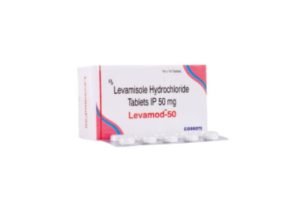

Sulfadoxine + Pyrimethamine Medicine
Description:
Sulfadoxine and Pyrimethamine is a fixed-dose combination antimalarial medication, primarily used for the prevention and treatment of uncomplicated Plasmodium falciparum malaria. Sulfadoxine, a long-acting sulfonamide, inhibits dihydropteroate synthetase, an enzyme involved in folate synthesis, while pyrimethamine, a dihydrofolate reductase inhibitor, prevents the reduction of dihydrofolic acid to tetrahydrofolic acid. Together, they interfere with the folate metabolism of the parasite, leading to its death.
Uses:Sulfadoxine +Pyrimethamine
- Treatment of uncomplicated Plasmodium falciparum malaria.
- Intermittent preventive treatment in pregnancy (IPTp).
- Prophylaxis of malaria in high-risk areas.
- Used in some cases for treatment of toxoplasmosis.
- Intermittent preventive treatment for infants (IPTi) in certain regions.
- Occasionally used in resistant malaria regions.
- Combination therapy with artesunate to reduce resistance.
- Investigated in some protozoal infections.
Dosage:
- Adults: One tablet (500 mg Sulfadoxine + 25 mg Pyrimethamine) as a single dose for treatment.
- Children (based on weight):
- 5-10 kg: ¼ tablet.
- 11-20 kg: ½ tablet.
- 21-30 kg: ¾ tablet.
- Above 30 kg: 1 tablet.
- For IPTp: Administer a single dose during the second and third trimesters of pregnancy.
Side Effects:
- Skin rash or severe hypersensitivity (Stevens-Johnson syndrome).
- Gastrointestinal disturbances (nausea, vomiting, diarrhea).
- Headache or dizziness.
- Hematological disorders (megaloblastic anemia, leukopenia).
- Hepatotoxicity (elevated liver enzymes, jaundice).
- Renal toxicity (crystalluria).
- Allergic reactions (fever, urticaria).
- Photosensitivity or skin pigmentation changes.
Brand Names and Company (India/US) & Price:
- India:
- Falcigo-SP by Zydus Cadila – ₹25 for a single dose.
- Larinate-SP by Cipla – ₹30 per dose.
- US:
- Fansidar by Roche – Approx. $1.5 per tablet.
- Daraprim SP by GlaxoSmithKline – Variable pricing (availability restrictions).
Mechanism of Action:
Sulfadoxine inhibits the enzyme dihydropteroate synthetase, blocking folic acid synthesis in the parasite. Pyrimethamine inhibits dihydrofolate reductase, which is crucial for converting dihydrofolic acid to tetrahydrofolic acid, necessary for DNA synthesis. This dual blockade leads to folate deficiency in the parasite, inhibiting growth and multiplication.
Contraindications:
- Hypersensitivity to sulfonamides or pyrimethamine.
- Severe hepatic or renal impairment.
- Blood dyscrasias (e.g., anemia, leukopenia).
- First trimester of pregnancy (risk of teratogenic effects).
- Infants under 2 months of age.
Drug Interactions:
- Methotrexate: Increased risk of folate deficiency.
- Phenytoin: May potentiate the effects of phenytoin and lead to toxicity.
- Trimethoprim: Additive antifolate effect.
- Antimalarials (Artemisinin derivatives): Often co-administered but requires careful monitoring for resistance.
- Warfarin: Increased risk of bleeding due to sulfonamide interaction.
Precautions:
- Regular monitoring of liver and renal function in long-term use.
- Monitor for signs of hypersensitivity reactions or severe dermatological reactions.
- Avoid sun exposure or use protective measures to prevent photosensitivity.
- Ensure adequate hydration to prevent crystalluria.
- Use cautiously in pregnant women during the second and third trimesters for IPTp.
- Not recommended for individuals with G6PD deficiency due to risk of hemolytic anemia.
Patient Counseling Information:
- Inform patients about the importance of completing the full course of treatment to prevent resistance.
- Educate patients on recognizing signs of hypersensitivity (rash, itching) or severe reactions and the need to seek immediate medical attention.
- Advise patients to drink plenty of fluids during treatment.
- Warn patients about potential gastrointestinal upset and measures to manage these side effects.
- Pregnant women should only take the medication under the guidance of a healthcare provider.
Conclusion:
Sulfadoxine + Pyrimethamine is a highly effective antimalarial combination used in treating uncomplicated Plasmodium falciparum malaria. It is particularly valuable in areas with resistance to other antimalarial agents. However, due to the risk of severe side effects, including hypersensitivity reactions, its use should be carefully monitored, particularly in patients with known allergies or comorbidities. Emerging resistance to the drug combination is a growing concern, underscoring the importance of judicious use and combination therapy.
References:
- World Health Organization (WHO). “Guidelines for the treatment of malaria.” 3rd edition, 2015.
- “Pharmacology and Use of Sulfadoxine and Pyrimethamine.” British Medical Journal, 2018.
- “Intermittent Preventive Treatment of Malaria in Pregnancy (IPTp).” WHO, 2020.
Example:
A pregnant woman in her second trimester presents with a malaria diagnosis. She is prescribed Sulfadoxine + Pyrimethamine as a single-dose IPTp therapy to prevent further malarial episodes during her pregnancy.
Disclaimer:
The information provided is for educational purposes and should not be construed as medical advice. Always consult a healthcare provider for diagnosis and treatment tailored to individual needs.
Next page :-https://www.ncbi.nlm.nih.gov/books/NBK548044/







